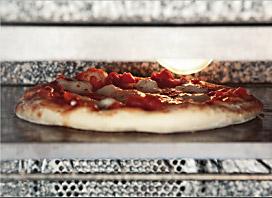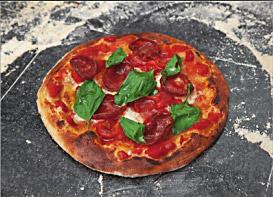-
Posts
8,089 -
Joined
-
Last visited
Content Type
Profiles
Forums
Store
Help Articles
Everything posted by Dave the Cook
-

"Modernist Cuisine" by Myhrvold, Young & Bilet (Part 2)
Dave the Cook replied to a topic in Cookbooks & References
No dust jackets. Presumably the case, which holds the hardbound volumes, serves the same purpose. I think it's a smart move, as jackets are easily torn, scorched or otherwise abused. -
That seems entirely possible. I should have said (above) "I think the filter is marketed to serve two purposes . . . " That said, some designs are probably more -- or less -- vulnerable to mineral deposits, hence Dairenne's adjusted cleaning schedule.
-
I think the filter serves two purposes: one is removing stuff that creates "off" flavors, which doesn't seem to be an issue for you. The other is the coffeemaker itself, which (if I'm right) will need more frequent cleaning if you don't use the filter. You might be used to this already, so if the taste is okay with you, it's probably a choice of whether you want to clean the machine fairly often, or pay for filters to slow down mineral deposition.
-

"Modernist Cuisine" by Myhrvold, Young & Bilet (Part 1)
Dave the Cook replied to a topic in Cookbooks & References
Thanks for including Alinea and Under Pressure for scale. I had no idea of the size of the volumes. Where are you going to shelve it? -
Just so everyone knows that we're talking about, here are a couple of photos (screen shots, actually) from Modernist Cuisine that show a side view of the pizza as it's cooking, and the finished product (sorry, no upskirts). (Photos copyright The Cooking Lab, LLC; used with permission.)
-
In the link BadRabbit posted, as well as this one: My linhttp://www.fornobravo.com/vera_pizza_napoletana/VPN_spec.html (they say essentially the same things), there is no mention of char, nor anything that sounds like char. What it says in Section 2.5 implies something else, at least to me: Who wants charred bread? What Modernist Cuisine says is "you can cook a pizza that's as fast and good as any you'll find in Naples." That's quite a boast, but it's not the same thing as saying "This is how you make Pizza Napoletana."
-
Specifically, the recipe says to wait half an hour, which will be, in most cases, a lot longer than the time it will take a home oven to tell you it's up to temperature. Domestic ovens are notorious liars.
-
I suspect the Mylar serves two purposes: 1) prevents exposure to light and air, and 2) looks cool. There are a number of ways to deal with both that don't require resealing.
-
Here's what it says in Modernist Cuisine (p 2-284): Under "centrifuge," it says "Beckman-Coulter, Sorvall (now Thermo Scientific)" and lists a price range of $10,000 to $30,000. On the next page, under a list of "Handy Special-Purpose Tools," this remark is appended: In the section titled "You Spin Me Right 'Round," (p 2-362) it goes into further detail: They also recommend a refrigerated model to counteract heat generated by air friction. There's also a page on centrifuge safety, and additional instructions for how to balance the load.
-

"Modernist Cuisine" by Myhrvold, Young & Bilet (Part 1)
Dave the Cook replied to a topic in Cookbooks & References
Yeah, it seems like fair review to me, too, though I found the two paragraphs about alleged conflict amongst modernists to be confusing, not to mention beside the point -- and space that could have been used better. Who knew there was a war going on? And who declared Americans the victors? The books are full of recipes from pretty much anyone who's made a significant mark on moderninst cuisine, and if there's an Anglo bias, I certainly haven't noticed it. On the other hand, I think she encapsulates the real value of the book, at least for me: I had a similar moment last night when I was making French fries. I've gotten into the habit of relying mostly on timing, with a visual check for golden-brownness. But for several reasons, those aren't really good (or at least not the only) indicators of fry goodness. Having just read the section in MC about the three stages of deep frying, I had been reminded of things I'd forgotten, and had gotten scientific clarification on what I was seeing in the pot. Result: best fries I've made in many months. As for the notion that the recipes are too complicated, the same thing could be said about many restaurant-based cookbooks. That doesn't mean they aren't worth having and reading. -
316 is commonly used for food applications. As far as heat is concerned, what are you worried about? It's not going to melt unless the heating element in your oven can reach 1375°C (about 2500°F).
-
I found part of this a bit discouraging. When it comes to humidity control, surely there's some middle ground between pans of water/random spritzing and an Enviro-Pak smoker?
-
I think if you got some decently sized hocks, you could either trim out the meat and treat the larger pieces like cheek, or adjust the smoking and cooking times to accommodate hocks, then harvest the meat. Speaking of smoking, the recipe says 7C/45F at 50% relative humidity for 24 hours. Are you going to attempt that, Chris, and if so, how?
-
Doesn't Thomas Keller serve Sysco fries at Bouchon?
-
Did I miss something? How do you cold-smoke on a Big Green Egg?
-
Also because it's light, the maltodextrin gets used up fast. I've made just two recipes of bacon powder, and I'm almost out of it.
-

"Modernist Cuisine" by Myhrvold, Young & Bilet (Part 1)
Dave the Cook replied to a topic in Cookbooks & References
I saw a few very minor editing issues (not sure I'd specifically call them typos), but since it wasn't clear to me that what we were seeing was what actually went to press or a slightly earlier version, I didn't call anyone's attention to them. -
It's odd, because propane actually has more energy, but most ranges are optimized for natural gas. The difference will vary among manufacturers -- some do the conversion well, and some don't seem to care. Personally, I'd invest in a good electric range before running gas lines and buying an underpowered propane stove.
-
We think most of the display issues have been fixed in IE7. Please check it out. IE6 should be functional now, but the browser doesn't handle certain "modern" styles, um, gracefully.
-
Thanks, Mike -- and sorry you're having trouble. We know there are problems with Internet Explorer 7 (IE8 seems to be fine). We're working on the problem.
-
It would help out the tech team if, when you have an issue like this, you posted the following information: Computer platform (PC, Mac, Blackberry, etc.) Operating system (Vista, XP, Mac OS, etc.) Browser (IE, Firefox, Chrome, etc.) Browser version
-

"Modernist Cuisine" by Myhrvold, Young & Bilet (Part 1)
Dave the Cook replied to a topic in Cookbooks & References
In the first part of a two-part interview with Stephen Dubner (of Freakonomics fame), Waters said of the modernist movement: -
That's exactly the kit I got. My kitchen is in a state of stalled renovation, so I haven't been able to do much experimentation. In the meantime, does anyone have any brilliant ideas for organizing all those foil pouches?
-
To me, freshness is more important than size. That means that if I'm buying at a supermarket (which is what I do most of the time) I want whichever size has the most turnover. In the US that's going to be large (stocks on hand 31 January 2001).
-
Pretty much, yeah. It started with reading a Cook's Illustrated article on quick stock, where they tested with all the possible combinations of the typical veg: celery, carrots, onion. They dismissed all but the onion. I tested too, and agreed. Then I dropped the onion, too, deciding it was more trouble than it was worth. I can always add onion in the dish. I think tradition -- in stock making, anyway -- is needlessly confining. I think this is probably a good idea. Bone-in sliced pork shoulder (aka country-style ribs) would work, too, and it's a little easier to come by.



